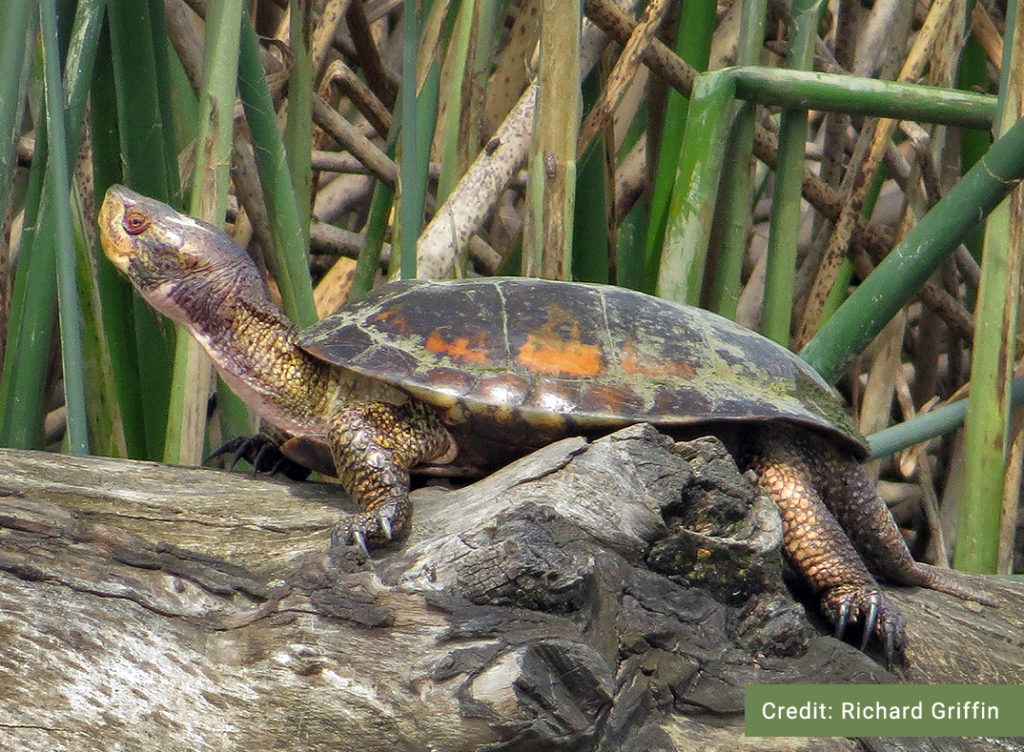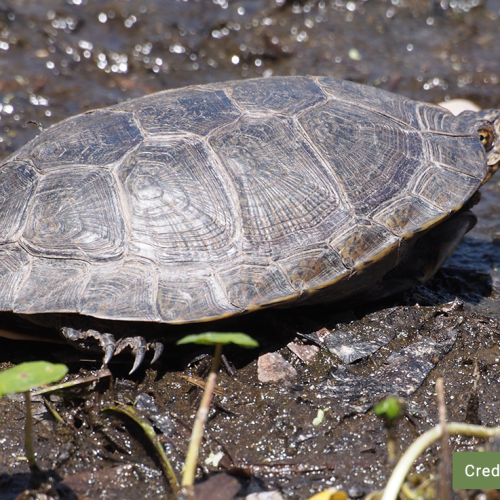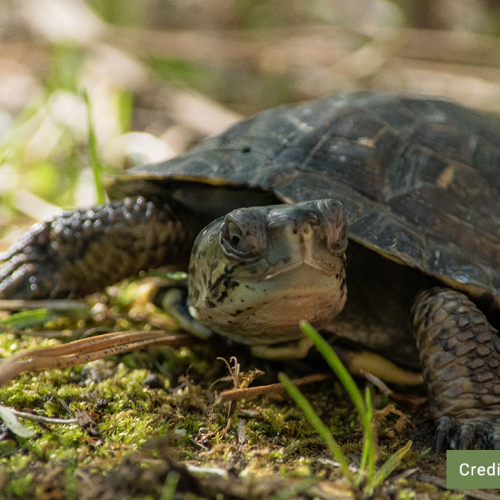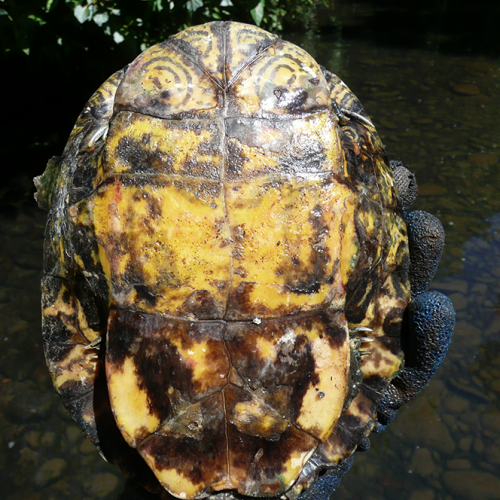Credit: Alan Venron
Northwestern Pond Turtle
Actinemys marmorata
Description
Other names: Western Pond Turtle; Northern Pacific Pond Turtle
The Northwestern Pond Turtle is a small-medium sized turtle that reaches a maximum carapaceDefinition:The hard upper shell of a turtle, crustacean, or arachnid. length of 25 cm, although most individuals are smaller than this. They have a smooth, broad carapace that is olive, dark brown, or black, with some light spotting or lines that radiate out from a central point on each scuteDefinition:Individual plates of the carapace in turtles. Also often used interchangeably for scales in reptiles. . The plastonDefinition:The nearly flat part of the shell structure on the underside of a turtle or other animal. is pale yellow with irregular dark blotching. The skin is drab grey, sometimes with dull yellow patterning on the neck and chin. Hatchlings are very small (2-3cm), and resemble adults but with a heavily keeled carapace and a large dark blotch in the centre of the plastron.
Listen to the Indigenous words for “turtle” here!

Similar Species
The Northwestern Pond Turtle is similar in size to the Western Painted Turtle and the Red-eared Slider, but can be easily distinguished by its comparatively drab colouration. The Northwestern Pond Turtle does not have yellow stripes on the head, neck, or limbs. Some older Red-eared Slider individuals may also have subtle colouration, but the rear section of the shell is lightly serrated.
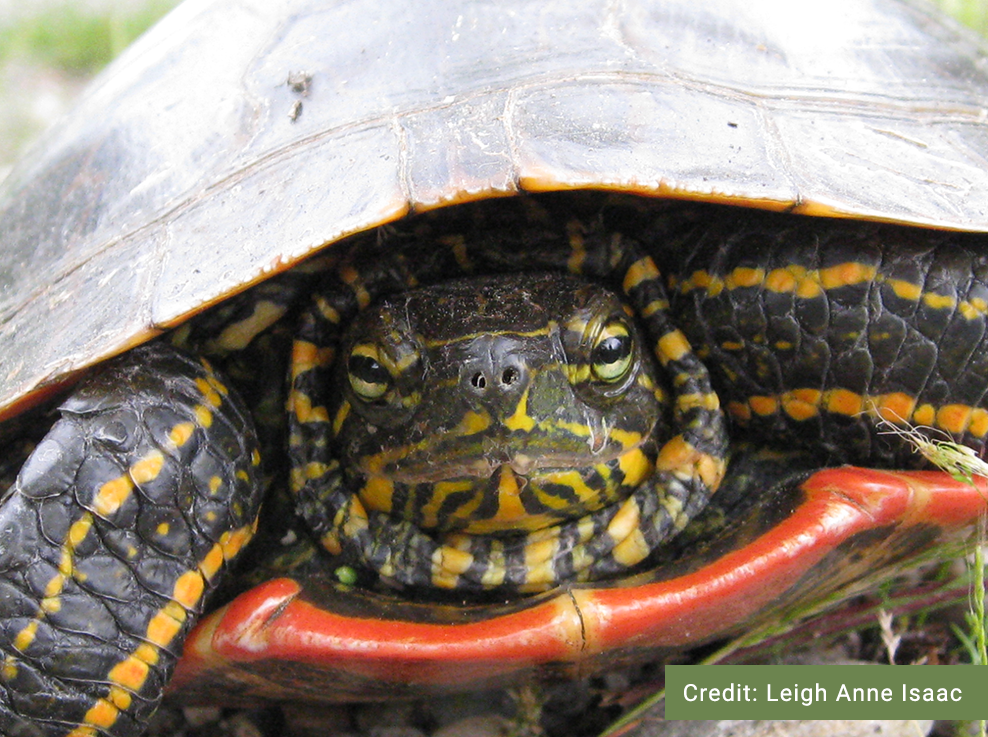
Western Painted Turtle
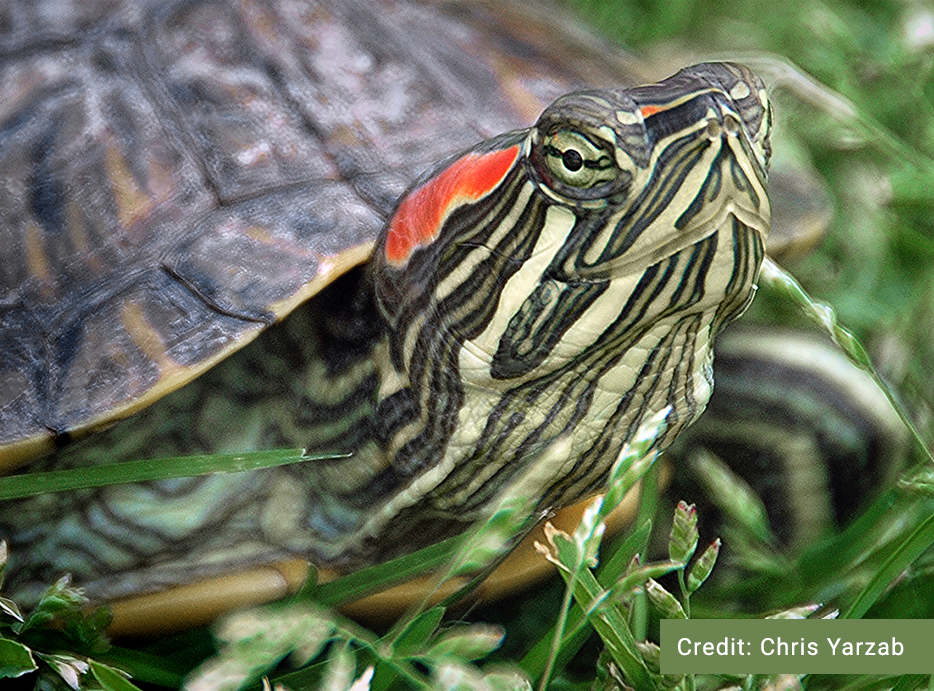
Red-eared Slider
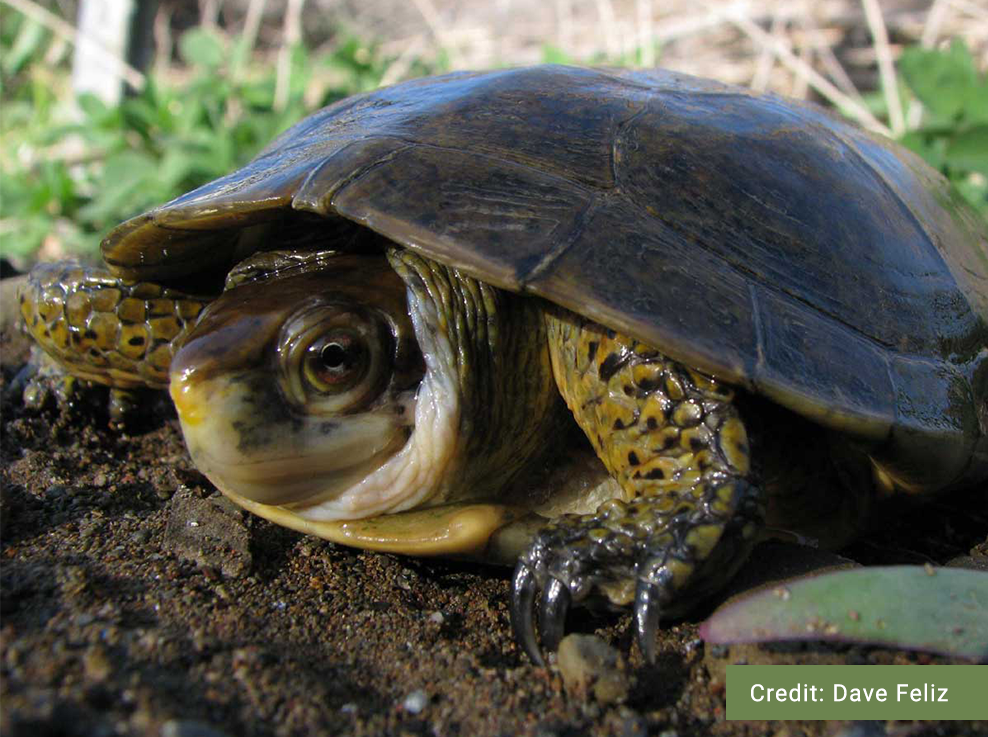
Northwestern Pond Turtle
Distribution
Habitat
Reproduction
Diet
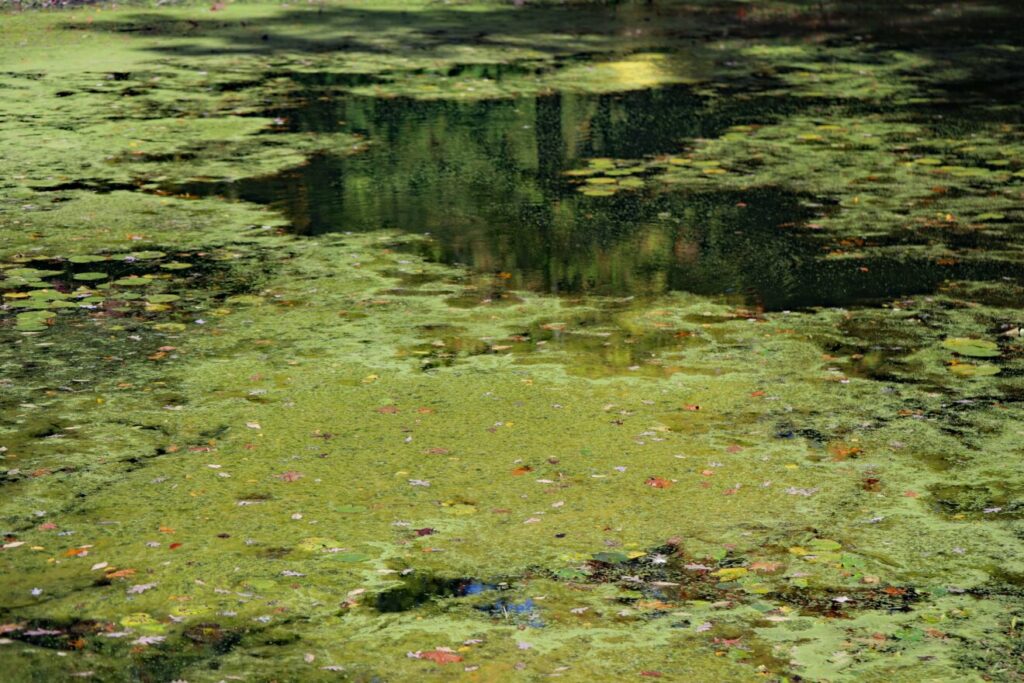
Conservation Status
Global: G3G4 (2013)
COSEWIC: XT
SARA:1-XX (2005)
Provincial: SX (2018)
BC List: Red
Learn more about conservation status rankings here
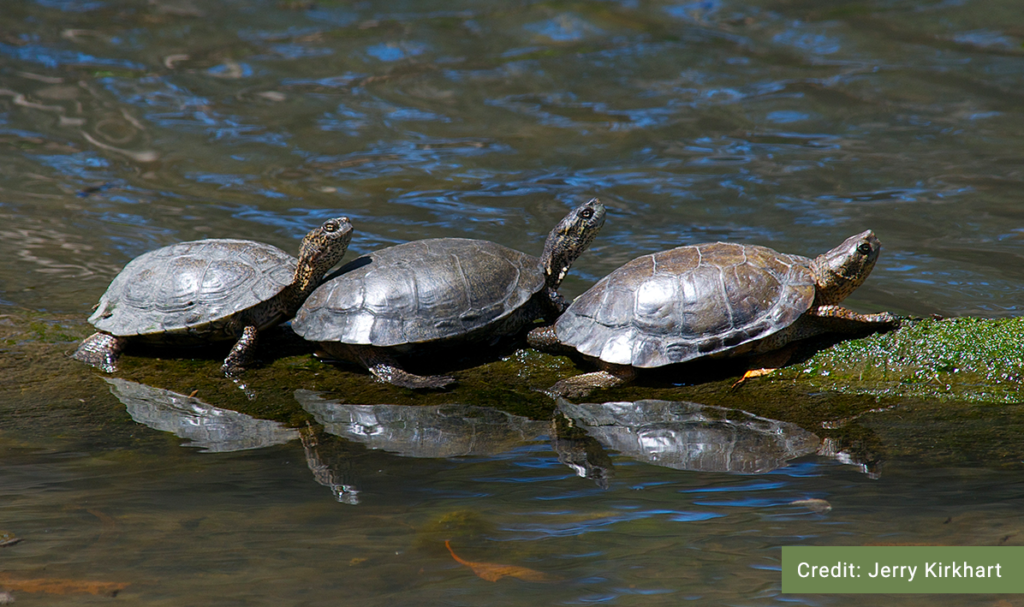
Threats
Did You Know?
Northwestern Pond Turtles seem to be drought tolerant, as they have been reported to estivate (stop eating and reduce their activity) in the mud of any surviving pools of water during particularly hot and dry periods.
Species Account Author: Marcus Atkins
B.C. Conservation Data Centre. 2011. Species Summary: Actinemys marmorata. B.C. Minist. of Environment. Available:https://a100.gov.bc.ca/pub/eswp/ (accessed Jun 24, 2021).
B.C. Conservation Data Centre. 2018. Conservation Status Report: Actinemys marmorata. B.C. Minist. of Environment. Available: https://a100.gov.bc.ca/pub/eswp/ (accessed Jun 24, 2021).
B.C. Conservation Data Centre. 2021. BC Species and Ecosystems Explorer. B.C. Minist. of Environ. Victoria, B.C. Available: https://a100.gov.bc.ca/pub/eswp/ (accessed Jun 24, 2021).
COSEWIC. 2002i. COSEWIC assessment and status report on the Pacific pond turtle Clemmys marmorata in Canada. Committee on the Status of Endangered Wildlife in Canada. Ottawa.
vi + 17 pp.
Environment Canada. 2015k. Recovery Strategy for the Pacific Pond Turtle (Actinemys marmorata) in Canada. Species at Risk Act Recovery Strategy Series. Environment Canada, Ottawa. 5 pp. + Annex
Ministry of Environment. 2012c. Recovery plan for the Western Pond Turtle (Actinemys marmorata) in British Columbia. Surrey, BC. 27pp.
http://linnet.geog.ubc.ca/efauna/Atlas/Atlas.aspx?sciname=Actinemys%20marmorata
https://www.bcreptiles.ca/turtles/westernpond.htm
http://canadianherpetology.ca/species/species_page.html?cname=Northwestern%20Pond%20Turtle

